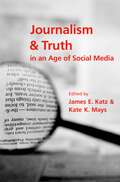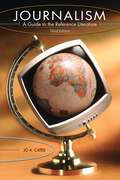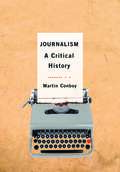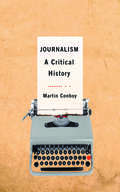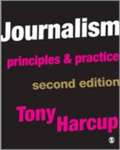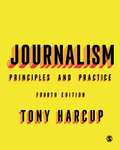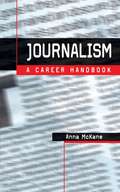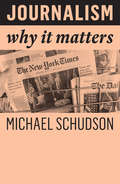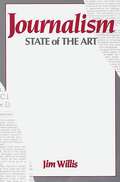- Table View
- List View
Joseph Opatoshu: A Yiddish Writer Between Europe and America
by Sabine Koller"At the turn of the twentieth century East European Jews underwent a radical cultural transformation, which turned a traditional religious community into a modern nation, struggling to find its place in the world. An important figure in this 'Jewish Renaissance' was the American-Yiddish writer and activist Joseph Opatoshu (1886-1954). Born into a Hassidic family, he spent his early childhood in a forest in Central Poland, was educated in Russia and studied engineering in France and America. In New York, where he emigrated in 1907, he joined the revitalizing modernist group Di yunge - The Young. His early novels painted a vivid picture of social turmoil and inner psychological conflict, using modernist devices of multiple voices and mixed linguistic idioms. He acquired international fame by his historical novels about the Polish uprising of 1863 and the expulsion of Jews from Regensburg in 1519. Though he was translated into several languages, Yiddish writing always fostered his ideas and ideals of Jewish identity. Although he occupied a key position in the transnational Jewish culture during his lifetime, Opatoshu has until recently been neglected by scholars. This volume brings together literary specialists and historians working in Jewish and Slavic Studies, who analyse Opatoshu's quest for modern Jewish identity from different perspectives. The contributors are Shlomo Berger (Amsterdam), Marc Caplan (Baltimore, MD), Gennady Estraikh (New York), Roland Gruschka (Heidelberg), Ellie Kellman (Boston), Sabine Koller (Regensburg), Mikhail Krutikov (Ann Arbor, MI), Joshua Lambert (Amherst, MA), Harriet Murav (Urbana-Champaign, IL), Avrom Novershtern (Jerusalem), Dan Opatoshu (Los Angeles), Eugenia Prokop-Janiec (Krakow), Jan Schwarz (Lund), Astrid Starck (Basel/Mulhouse), Karolina Szymaniak (Krakow) and Evita Wiecki (Munich)."
Joseph Severn, A Life: The Rewards of Friendship
by Sue BrownThis biography of Joseph Severn (1793-1879), the best known but most controversial of Keats's friends, is based on a mass of newly discovered information, much of it still in private hands. Severn accompanied the dying Keats to Italy, nursed him in Rome and reported on his last weeks there in a famous series of moving letters. After Keats's death in relative obscurity, Severn pressed hard for an early biography and a more fitting memorial in the Protestant Cemetery in Rome. In the nineteenth century Severn's friendship with Keats was seen as a model of devoted masculine companionship and he was reburied by popular acclaim next to Keats in 1882. In the twentieth century, by contrast, he was denigrated as an unreliable, self-promoting witness. Sue Brown's book fills a major gap in studies of Keats and his circle. It reassesses Severn's character, friendship with Keats, and influence on the posthumous development of the poet's fame and provides new information on Keats's death. The significance of Severn's artistic career has previously been downplayed. This book offers the first full assessment of his work and of his turbulent spell as British Consul in Rome from 1860 to 1871. Keats was not Severn's only famous friend. For most of his adult life Severn was at the heart of the large, lively British community in Rome welcoming amongst others Gladstone, who became his most important patron, Ruskin, Walter Scott, Wordsworth, Turner, Samuel Palmer, David Wilkie, and many more. He maintained long friendships with Leigh Hunt, Mary Shelley, Charles Eastlake, Richard Monckton Milnes, amongst others, and enjoyed a rich family life.
Joseph Zobel: Négritude and the Novel (Contemporary French and Francophone Cultures #51)
by Louise HardwickJoseph Zobel (1915-2006) is one of the best-known Francophone Caribbean authors, and is internationally recognised for his novel La Rue Cases-Nègres (1950). Yet very little is known about his other novels, and most readings of La Rue Cases-Nègres consider the text in isolation. Through a series of close readings of the author’s six published novels, with supporting references drawn from his published short stories, poetry and diaries, Joseph Zobel: Négritude and the Novel generates new insights into Zobel’s highly original decision to develop Négritude’s project of affirming pride in black identity through the novel and social realism. The study establishes how, influenced by the American Harlem Renaissance movement, Zobel expands the scope of Négritude by introducing new themes and stylistic innovations which herald a new kind of social realist French Caribbean literature. These discoveries in turn challenge and alter the current understanding of Francophone Caribbean literature during the Négritude period, in addition to contributing to changes in the current understanding of Caribbean and American literature more broadly understood.
Josephus Daniels Says . . .: An Editor's Political Odyssey from Bryan to Wilson and F.D.R., 1894-1913
by Joseph L. MorrisonIn this study, Morrison traces Daniels's editorial opinions and policies from his early editorial apprenticeship to his appointment as Wilson's secretary of the navy. Morrison sheds light on the relationship between Daniels's editorial views and the various forces active in the state and nation between 1890 and 1912.Originally published in 1962.A UNC Press Enduring Edition -- UNC Press Enduring Editions use the latest in digital technology to make available again books from our distinguished backlist that were previously out of print. These editions are published unaltered from the original, and are presented in affordable paperback formats, bringing readers both historical and cultural value.
Jottings under Lamplight
by Lu XunLu Xun (1881–1936) is widely considered the greatest writer of twentieth-century China. Although primarily known for his two slim volumes of short fiction, he was a prolific, inventive essayist. These 62 essays—20 translated for the first time—showcase his versatility as a master of prose forms and his brilliance as a cultural critic.
Jottings under Lamplight
by Lu XunLu Xun (1881–1936) is widely considered the greatest writer of twentieth-century China. Although primarily known for his two slim volumes of short fiction, he was a prolific, inventive essayist. These 62 essays—20 translated for the first time—showcase his versatility as a master of prose forms and his brilliance as a cultural critic.
JOURNAL & TRUTH IN AGE OF SOCIAL MEDIA C
by James E. Katz and Kate K. MaysTruth qualities of journalism are under intense scrutiny in today's world. Journalistic scandals have eroded public confidence in mainstream media while pioneering news media compete to satisfy the public's appetite for news. Still worse is the specter of "fake news" that looms over media and political systems that underpin everything from social stability to global governance. This volume aims to illuminate the contentious media landscape to help journalism students, scholars, and professionals understand contemporary conditions and arm them to deal with a spectrum of new developments ranging from technology and politics to best practices. Fake news is among the greatest of these concerns, and can encompass everything from sarcastic or ironic humor to bot-generated, made-up stories. It can also include the pernicious transmission of selected, biased facts, the use of incomplete or misleadingly selective framing of stories, and photographs that editorially convey certain characteristics. This edited volume contextualizes the current "fake news problem." Yet it also offers a larger perspective on what seems to be uniquely modern, computer-driven problems. We must remember that we have lived with the problem of people having to identify, characterize, and communicate the truth about the world around them for millennia. Rather than identify a single culprit for disseminating misinformation, this volume examines how news is perceived and identified, how news is presented to the public, and how the public responds to news. It considers social media's effect on the craft of journalism, as well as the growing role of algorithms, big data, and automatic content-production regimes. As an edited collection, this volume gathers leading scholars in the fields of journalism and communication studies, philosophy, and the social sciences to address critical questions of how we should understand journalism's changing landscape as it relates to fundamental questions about the role of truth and information in society.
Journal Writing in Second Language Education: Controversies In Second Language Writing: Dilemmas And Decisions In Research And Instruction (The Michigan Series on Teaching Multilingual Writers)
by Christine Pearson CasanaveJournal writing is not new--journals have been around for centuries. More recently, journals have been viewed as a means of scaffolding reflective teaching and encouraging reflectivity in research processes. As a result, some educators may ask, “What more do we need to know?” Those likely to raise this question are probably not thinking of the explosive growth of reflective writing enabled by social networking on the Web, the blogs and other interactive e-vehicles for reflection on experiences in our literate, “real,” and virtual lives This revisiting of journal writing from a 21st century perspective, informed by relevant earlier literature, is what Christine Pearson Casanave guides readers through in this first book-length treatment of the use of journal writing in the contexts of language learning, pre and in-service teaching, and research. Casanave has put together existing ideas that haven't been put together before and has done it not as an edited collection, but as a single-authored book. She has done it in a way that will be especially accessible to teachers in language teacher education programs and to practicing teachers and researchers of writing in both second and foreign language settings, and in a way that will inspire all of us to think about, not just do, journal writing. Those who have never attempted to use journals in their classes and own lives, as well as others who have used it with mixed results, will probably be tempted to try it in at least some of the venues Casanave provides guidance for. Those already committed to journal writing will very likely find in this book new reasons for expanding and enhancing their use of journals.
Journalism (UK Higher Education OUP Humanities & Social Sciences Media, Film & Cultural Studies)
by Stuart Allan"...this book can be recommended to journalism students as a useful entry point into many of the debates surrounding 21st century journalism, and as a way of encouraging thought about what, indeed, a journalist may be." Tony Harcup, University of SheffieldWhat are the key issues confronting journalism today, and why?What are the important debates regarding the forms and practices of reporting?How can the quality of news be improved?Journalism: Critical Issues explores essential themes in news and journalism studies. It bringstogether an exciting selection of original essays which engage with the most significant topics,debates and controversies in this fast-growing field.Using a wide range of case studies, topics include:Journalism’s role in a democracySource dynamics in news productionJournalism ethicsSexism and racism in the newsTabloidization, scandals and celebrityReporting conflict, terrorism and warThe future of investigative journalismThe book is written in a lively manner designed to invite discussion by identifying key questionsaround a critical issue. Each chapter assesses where journalism is today, its strengths and itschallenges, and highlights ways to improve upon it for tomorrow.Journalism: Critical Issues is essential reading for students and researchers in the fields ofnews and journalism, media studies, cultural studies, sociology and communication studies.Contributors: Stuart Allan, Alison Anderson, Olga Guedes Bailey, Steven Barnett,Oliver Boyd-Barrett, Michael Bromley, Cynthia Carter, Simon Cottle, Chas Critcher,Matthew David, Máire Messenger Davies, Bob Franklin, Robert A. Hackett, RamaswamiHarindranath, Ian Hutchby, Richard Keeble, Justin Lewis, Minelle Mahtani, P. David Marshall,Brian McNair, Martin Montgomery, Alan Petersen, Susanna Hornig Priest, Jane Rhodes,Karen Ross, David Rowe, Prasun Sonwalkar, Linda Steiner, Howard Tumber, Ingrid Volkmer,Karin Wahl-Jorgensen, Barbie Zelizer.
Journalism: A Guide to the Reference Literature (Reference Sources in the Humanities)
by Jo A. CatesJournalism: A Guide to the Reference Literature is a critically annotated bibliographic guide to print and electronic sources in print and broadcast journalism. The first edition was published in 1990; the second in 1997. It has been described as one of the critical reference sources in journalism today, and it is a key bibliographic guide to the literature. Choice magazine called it a benchmark publication for which there are no comparable sources. The format is similar to the second edition. What makes this edition significantly different is the separation of Commercial Databases and Internet Resources. Commercial Databases includes standard fee-based resources. The new chapter on Internet sources features Web-based resources not included in the commercial databases chapter as well as portals, other online files, listservs, newsgroups, and Web logs/blogs. All chapters have been revised, and there are significant revisions in Directories, Yearbooks, and Collections; Miscellaneous Sources; Core Periodicals; Societies and Associations; and Research Centers and Archives. The second edition has 789 entries. The third edition contains almost 1,000 entries. James Carey of Columbia University, who provided the foreword for the first two editions, has updated his foreword for this edition.
Journalism: A Critical History (PDF)
by Dr Martin ConboyTraditional news values no longer hold: infotainment has the day. Journalism is in a terminal state of decline. Or so some contemporary commentators would argue. Although there has been a great diversity in format and ownership over time, Conboy demonstrates the surprising continuity of concerns in the history of journalism. Questions of political influence, the impact of advertising, the sensationalisation of news coverage, the 'dumbing down' of the press, the economic motives of newspaper owners - these are themes that emerge repeatedly over time and again today. In this book, Martin Conboy provides a history of the development of newspapers, periodicals and broadcast journalism which · enables readers to engage critically with contemporary issues within the news media · outlines the connections, as well as the distinctions, across historical periods · spans the introduction of printed news to the arrival of the 'new' news media · demonstrates how journalism has always been informed by a cultural practices broader and more dynamic than the simple provision of news By situating journalism in its historical context, this book enables students to more fully understand the wide range of practices which constitute contemporary journalism. As such it will be an essential text for students of journalism and the media.
Journalism: A Critical History
by Dr Martin ConboyTraditional news values no longer hold: infotainment has the day. Journalism is in a terminal state of decline. Or so some contemporary commentators would argue. Although there has been a great diversity in format and ownership over time, Conboy demonstrates the surprising continuity of concerns in the history of journalism. Questions of political influence, the impact of advertising, the sensationalisation of news coverage, the 'dumbing down' of the press, the economic motives of newspaper owners - these are themes that emerge repeatedly over time and again today. In this book, Martin Conboy provides a history of the development of newspapers, periodicals and broadcast journalism which · enables readers to engage critically with contemporary issues within the news media · outlines the connections, as well as the distinctions, across historical periods · spans the introduction of printed news to the arrival of the 'new' news media · demonstrates how journalism has always been informed by a cultural practices broader and more dynamic than the simple provision of news By situating journalism in its historical context, this book enables students to more fully understand the wide range of practices which constitute contemporary journalism. As such it will be an essential text for students of journalism and the media.
Journalism: Principles and Practice (PDF)
by Tony HarcupA holistic assessment of what journalism is all about, with plenty of enterprising interpretations of our trade - a word I prefer to 'profession'. I never met a more 'unprofessional' breed than that of my fellow hacks. This book will, I hope, lead our successors both to question and rebel more than we have. - Jon Snow, Channel 4 News Stands out in a crowded field. The Guardian The bible of professional education in journalism... Every student of journalism should buy a copy. - THE (Times Higher Education) This is the indispensable guide to the theory and practice of journalism, now updated with 25% entirely new material. With its innovative text design, it creatively combines the experience and advice of practising journalists with the theories and insights from the academic study of journalism.
Journalism: Principles and Practice
by Tony HarcupA holistic assessment of what journalism is all about, with plenty of enterprising interpretations of our trade - a word I prefer to 'profession'. I never met a more 'unprofessional' breed than that of my fellow hacks. This book will, I hope, lead our successors both to question and rebel more than we have. - Jon Snow, Channel 4 News Stands out in a crowded field. The Guardian The bible of professional education in journalism... Every student of journalism should buy a copy. - THE (Times Higher Education) This is the indispensable guide to the theory and practice of journalism, now updated with 25% entirely new material. With its innovative text design, it creatively combines the experience and advice of practising journalists with the theories and insights from the academic study of journalism.
Journalism: Principles and Practice
by Tony HarcupGet 12 months FREE access to an interactive eBook* when you buy the paperback! (Print paperback version only, ISBN 9781473930339) To find out more and for a preview of the new edition visit https://study.sagepub.com/journalism Journalism: Principles & Practice remains the essential textbook for all students of journalism. With each print copy of the new third edition, you receive FREE access to the interactive eBook edition offering on-the-go access to a wealth of digital resources including video tutorials from the author. This book is the must-have guide to everything you need to know about how journalism works. The new edition is fully updated to cover the new essentials: social media, the impact of Twitter, and the need for an ethical approach. This book will equip you with all the skills and savvy you need to become the resourceful yet ethical journalists of the future. New and improved features will help you: Get to grips with the huge impact of social and mobile media on how we gather information and tell stories Grasp the rights and wrongs of journalism with a new chapter on ethics and regulation Learn how to make the most of your skills with tips from journalists such as Cathy Newman and Andrew Norfolk Think through ‘what would you do?' in a new feature that takes you into the real world of journalism at the end of every chapter This new edition retains its innovative two-column structure, stylishly blending theory and practice. As relevant to the newsroom as the seminar room, it is the one book you will need to take you through your degree and into your career as a journalist. *interactivity only available through Vitalsource eBook
Journalism: Principles and Practice
by Tony Harcup"A classic text of journalism education that goes beyond the basics to ask the questions that anyone thinking of becoming a journalist really needs to consider. An ethical, entertaining and enduring read - highly recommended." - Michelle Stanistreet, General Secretary, National Union of Journalists This is the one book you need to guide you through university and into your career in journalism. It features stories and tips from a diverse range of journalists, including Ayshah Tull and Cathy Newman of Channel 4 News; Emma Youle of HuffPost; Andrew Norfolk of the Times; and the Mirror’s Nada Farhoud. Covering everything from print to podcasting, it will equip you with the skills and understanding you need to become a successful and ethical journalist. Tony Harcup’s Journalism: Principles and Practice is simply the best guide there is to studying and practising journalism today. "A holistic assessment of what journalism is all about, with plenty of enterprising interpretations of our trade - a word I prefer to ′profession′. I never met a more ′unprofessional′ breed than that of my fellow hacks. This book will, I hope, lead our successors both to question and rebel more than we have." - Jon Snow, Channel 4 News
Journalism: Principles and Practice
by Tony Harcup"A classic text of journalism education that goes beyond the basics to ask the questions that anyone thinking of becoming a journalist really needs to consider. An ethical, entertaining and enduring read - highly recommended." - Michelle Stanistreet, General Secretary, National Union of Journalists This is the one book you need to guide you through university and into your career in journalism. It features stories and tips from a diverse range of journalists, including Ayshah Tull and Cathy Newman of Channel 4 News; Emma Youle of HuffPost; Andrew Norfolk of the Times; and the Mirror’s Nada Farhoud. Covering everything from print to podcasting, it will equip you with the skills and understanding you need to become a successful and ethical journalist. Tony Harcup’s Journalism: Principles and Practice is simply the best guide there is to studying and practising journalism today. "A holistic assessment of what journalism is all about, with plenty of enterprising interpretations of our trade - a word I prefer to ′profession′. I never met a more ′unprofessional′ breed than that of my fellow hacks. This book will, I hope, lead our successors both to question and rebel more than we have." - Jon Snow, Channel 4 News
Journalism: Principles and Practice
by Tony Harcup"A classic text of journalism education that goes beyond the basics to ask the questions that anyone thinking of becoming a journalist really needs to consider. An ethical, entertaining and enduring read - highly recommended." - Michelle Stanistreet, General Secretary, National Union of Journalists This is the one book you need to guide you through university and into your career in journalism. It features stories and tips from a diverse range of journalists, including Ayshah Tull and Cathy Newman of Channel 4 News; Emma Youle of HuffPost; Andrew Norfolk of the Times; and the Mirror’s Nada Farhoud. Covering everything from print to podcasting, it will equip you with the skills and understanding you need to become a successful and ethical journalist. Tony Harcup’s Journalism: Principles and Practice is simply the best guide there is to studying and practising journalism today. "A holistic assessment of what journalism is all about, with plenty of enterprising interpretations of our trade - a word I prefer to ′profession′. I never met a more ′unprofessional′ breed than that of my fellow hacks. This book will, I hope, lead our successors both to question and rebel more than we have." - Jon Snow, Channel 4 News
Journalism: A Career Handbook (Professional Media Practice)
by Anna McKanePrint journalism is one of the most popular career options amongrecent graduates. But how many of them land that crucial first job andgo on to build a career in print journalism? This book gives you all you need to plan and build your career injournalism, including sections on: - Analysis of the industry: sectorsand structures - Types of print journalism: newspapers, national andregional; magazines; consumer handouts; voluntary sector publishing;web journalism; agency work; photojournalism - Range of jobopportunities; freelance/salaried; in-house/in the field - Routes intojournalism: getting in and getting on - Training and education;resources/contacts.
Journalism: A Career Handbook (Professional Media Practice)
by Anna McKanePrint journalism is one of the most popular career options amongrecent graduates. But how many of them land that crucial first job andgo on to build a career in print journalism? This book gives you all you need to plan and build your career injournalism, including sections on: - Analysis of the industry: sectorsand structures - Types of print journalism: newspapers, national andregional; magazines; consumer handouts; voluntary sector publishing;web journalism; agency work; photojournalism - Range of jobopportunities; freelance/salaried; in-house/in the field - Routes intojournalism: getting in and getting on - Training and education;resources/contacts.
Journalism: Why It Matters (Why It Matters)
by Michael SchudsonDespite the criticisms that have been leveled at news organizations in recent years and the many difficulties they face, journalism matters. It matters, argues Schudson, because it orients people daily in the complex and changing worlds in which they live. It matters because it offers a fact-centered, documented approach to pertinent public issues. It matters because it keeps watch on the powerful, especially those in government, and can press upon them unpleasant truths to which they must respond. Corruption is stemmed, unwise initiatives stopped, public danger averted because of what journalists do. This book challenges journalists to think hard about what they really do. It challenges skeptical news audiences to be mindful not only of media bias but also of their own biases and how these can distort their perception. And it holds out hope that journalism will be for years to come a path for ambitious, curious young people who love words or pictures or numbers and want to use them to improve the public conversation in familiar ways or in ways yet to be imagined.
Journalism: State of the Art
by Jim WillisA necessity for the professional journalist's library, Journalism: State of the Art will prove a valuable resource for the student journalist as well. This book summarizes some 200 media studies many from the most prestigious journal in the trade, Journalism Quarterly. In a paraphrased-synthesis format, and using informal terms, the author arranges some of the most interesting studies of the 1980s into eight subject headings including: Ethics Law, and the Journalist; Advertising in the 1980s; Polling and Precision Journalism; and Predictors of Readership and Viewship.For many years there has been a gap between media researchers and the practicing journalist. Published research about journalism as a discipline may receive attention in the classroom but seldom gets in the newsroom. Viewing the gap between the researcher and practitioner, Willis offers comments from both sides. He surveys nearly 150 news executives on media research and gives an insightful look at what factors cause readers or viewers to pay attention to the news media. From trends in the industry to types of audiences, Journalism: State of the Art uses practical research studies presented in an accessible style. Offering the most current data available on media research, this book will prove a great instructional as well as reference tool. It is a must for college journalists, working press, and media marketers.
Journalism Across Boundaries: The Promises And Challenges Of Transnational And Transborder Journalism
by K. GrievesJournalistic activity crosses national borders in creative and sometimes unexpected ways. Drawing on many interviews and newsroom observation, this book addresses an overlooked but important aspect of international journalism by examining how journalists carry out their daily work at the transnational and regional transborder level.
Journalism Across Cultures: An Introduction
by Folker Hanusch Levi ObijioforIn today's global digital world, journalists are required to be cognizant of ethical and cultural issues beyond usual national boundaries. This text provides a theoretical and practical introduction to cross-cultural journalism, equipping students with the skills and understanding they need today.
Journalism After September 11 (Communication and Society)
by Barbie Zelizer Stuart AllanPraise for the first edition: This collection of essays comes mainly from academics but nobody should bridle at theorists lecturing practitioners. They properly challenge the way September 11th was reported - in a way that's both an endorsement of the role of the media and a wake-up call on its failures . . . anyone interested in our trade should read it.' - Roger Mosey, Ariel'A thoughtful and engaging examination of the effects of 9/11 on the field of journalism. Its unique aim is to discuss the impact of the attack as a personal trauma and its current and future effects on journalism and the reporting of the news. . . highly recommended.' - Library Journal Journalism After September 11 examines how the traumatic attacks of that day continue to transform the nature of journalism, particularly in the United States and Britain. Familiar notions of what it means to be a journalist, how best to practice journalism, and what the public can reasonably expect of journalists in the name of democracy, were shaken to their foundations. Ten years on, however, new questions arise regarding the lasting implications of that tragic day and its aftermath. Bringing together an internationally respected collection of scholars and media commentators, Journalism After September 11 addresses topics such as: journalism and public life at a time of crisis; broadsheet and tabloid newspaper coverage of the attacks; the role of sources in shaping the news; reporting by global news media such as CNN; Western representations of Islam; current affairs broadcasting; news photography and trauma; the emotional well-being of reporters; online journalism; as well as a host of pertinent issues around news, democracy and citizenship. This second edition includes four new chapters – examining Arabic newspaper reporting of the attacks, the perceptions of television audiences, national magazine coverage of the ensuing crisis, and the media politics of ‘othering’ – as well as revised chapters from the first edition and an updated Introduction by the co-editors. A foreword is provided by Victor Navasky and an afterword by Phillip Knightley.





